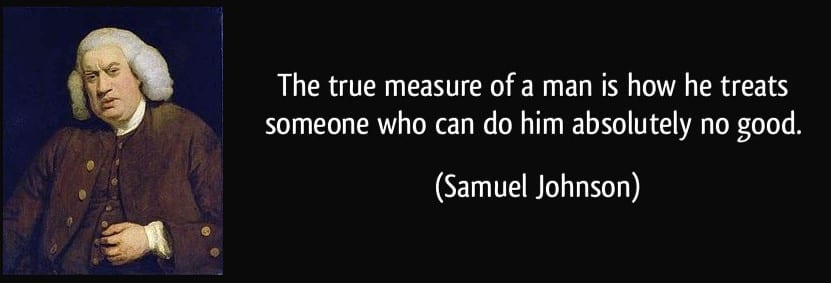
For some people, successful networking is second nature. They can walk into a room and immediately engage with strangers and leave them wanting to know more. For others, it doesn’t come quite so naturally. They have to work at it to make the connections they need to get ahead.
It doesn’t matter whether you’re just starting out on a quest for the right career, or you’re the CEO of a big blue-chip corporation. The value of successful networking is ever-present. After all, why go it alone when you can get the help, support and guidance of others!
After many years of working in Marketing and Advertising, I’m still definitely more in the 2nd camp when it comes to networking. I don’t mind the meeting strangers’ bit, but I have to put in an effort to get my point over succinctly and powerfully.
So here are the 6 tips that have helped me when it comes to successful networking.
1. What are you looking for and where are they?
As with everything, a bit of planning goes a long way. Before sticking out your hand and swapping details, think about what you need and then who can help.
Let’s take prepping for an interview as an example. Desk research can go a long way in finding all the facts about a company, but what about what it’s like to work there? That’s unlikely to be in an article posted online. But you can find out firsthand from someone who has worked there.
And start by looking closer to home. Friends family, teachers/lecturers (yes, they do have lives outside of school and college!) are an immediate and accessible network. Ask about and see if you can make any inroads from there. A simple introduction from a linked person can go a long way!

If that doesn’t work out, start to look online for people that have worked in that company. Platforms like LinkedIn offer in messaging services to members. But even if you’re not a member, you can still invite a connection with an introduction. Make your introduction a question about their company, and they might just bite.
And think about who you are contacting. If it’s the MD, they might not get back to you. But if it’s someone in a similar position to the one you’re going for; they might see your approach as a great initiative and respond to you.
Another thing to look out for is company webinars and meet-ups. Increasingly, industries and companies are hosting on and offline events to meet and greet people, and they are often free to attend. Events like this are gold when it comes to successful networking.
2. To get connected, make connections
If ever I’m meeting a company, I try and make sure I’ve searched out their social spaces and followed them. And take a look at what they’re liking and posting to their feeds. I’ve also checked out their website and signed up to their newsletter (if they have one). It’s simple and free to do and can give you great insight into what they’re up to and who their players are. This seems quite passive, but it’s a great example of networking at an organisational level. It also gives you great information to share at interviews. It shows the interviewer that you give a $#*! about the company you’re hoping to work with.
3. First impressions do count!
When you to get to the face-to-face meetings, I’m not going to patronise you with the look smart, firm handshake, good eye contact etc. etc. chat. I’m going to focus on just one thing – preparation.
Imagine the company you want to work for is going to be attending a trade show in your town and you’re going to it. This is the perfect time to meet with and connect to some of the people that work in that organisation.
You know you’re going to meet potentially valuable contacts. So plan ahead and work out what you’re going to say in that opening sentence or two.
Entrepreneurs plan something called an Elevator Pitch. It goes like this: Imagine you have a great business idea, and you get into a hotel lift, and Richard Branson is in there too. You have two floors to make an impression and to make it count. They perfect and practice that 30-second delivery that encapsulates everything they want to say, in the hope that he’ll write a massive cheque and you’re made! OK, it’s not that easy, but you get the idea.

You can take this idea and use it to form your own introductions. Work out what you want to say in that first 30 seconds to make the right impression.
But don’t make this a monologue. Successful networking is often underpinned by conversations, and they only work if they’re two way. So perhaps also think about the questions you want to ask and – MOST IMPORTANTLY – carefully listen to the answers given. If you manage to strike up a two-way conversation you’ve won!
4. The networking power of LinkedIn

It’s surprising how your social channels can all help with business networking. As mentioned before, following company pages and posts can be a really easy way to see under the bonnet of companies you’re interested in. But one social network stands out for business, and that’s LinkedIn.
From pre-interview prep to seeing who’s worked where. LinkedIn is a tremendous asset for making business connections.
At one of our Action Days, a participant shared how she uses LinkedIn to research interviewers so she can ask really engaging questions. A brilliant example of being proactive and having a smart approach to interviews.
I’d recommend anyone who is venturing into business to have a profile. It doesn’t have to share a whole lot, but it should capture who you are and what you’ve done. Some people keep it short; others go into more detail and make it like a second CV. On my profile, I share the companies I’ve worked for and the roles I’ve had. I also have a short personal intro and a reasonably professional picture.
I also use LinkedIn to like and(occasionally) share articles that have caught my eye.
Remember, this isn’t like Instagram/Facebook/Twitter etc. so take your time to find your voice.
It’s also the first connection I offer to people I meet. It’s nice and ‘safe’! I prefer not to have business contacts on my social networks as my weekend life isn’t particularly relevant to my work life.
And if you’re busy building your network we’d be only too happy to have you follow us!
5. Follow up and be quick!
LinkedIn is also great for following up. It’s all very well meeting people who might be able to help you. But if you don’t get their details, you haven’t made a real connection! So whether you have an email, or they’ve accepted your LinkedIn invitation, follow it up with a short note to remind them of your connection. Perhaps share a link that builds on something you talked about. And be quick.
I’ve previously worked for people who encourage a 24-hour response rule on business comms. And I think this is also true for engaging new connections. It takes a couple of minutes to send somebody a note of appreciation, and it makes a big impact.
6. Don’t just look for help; be helpful.

And finally, successful networking isn’t just about making connections that can help you. It’s also about helping others. It can be as simple as sharing a relevant link you’ve found, or bringing together people in your network that can help each other.
Generous actions like this don’t go unnoticed, and they cement bonds by making them mutually beneficial. It also feels pretty good when you see a connection you’ve made deliver something that wouldn’t have happened without you.
Please add comments if you’ve got some tips you want to share and please do read some of our other 6 Big Things Blog posts. There are some links below you might find handy.
Even better still, get in touch and write a post for us!
Happy and successful Networking!
